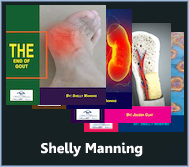Temporomandibular joint disorder
Temporomandibular joint disorder (TMD), also known as temporomandibular joint dysfunction or TMJ syndrome, refers to a group of conditions that affect the temporomandibular joint (TMJ) and surrounding structures, leading to pain, dysfunction, and discomfort in the jaw joint and muscles of mastication (chewing muscles). TMD is a common condition that can cause a range of symptoms and may result from various factors.
Some key points about temporomandibular joint disorder (TMD) include:
- Signs and Symptoms: TMD can present with a variety of signs and symptoms, including jaw pain or tenderness, clicking, popping, or grinding sounds during jaw movement, limited range of motion or locking of the jaw, muscle stiffness or fatigue in the jaw, face, or neck, headaches (including tension headaches and migraines), earaches, toothaches, and difficulty chewing or speaking.
- Causes: TMD can be caused by a combination of factors, including jaw trauma or injury, bruxism (teeth grinding or clenching), malocclusion (misalignment of the teeth or jaw), arthritis (such as osteoarthritis or rheumatoid arthritis), stress or muscle tension, poor posture, hormonal changes, and certain medical conditions.
- Diagnosis: Diagnosis of TMD typically involves a comprehensive evaluation by a healthcare provider, usually a dentist or oral surgeon, who specializes in TMJ disorders. This evaluation may include a medical history, physical examination, assessment of jaw movement and function, palpation of the jaw joint and surrounding muscles, and possibly imaging studies (such as X-rays, MRI, or CT scans) to evaluate the TMJ anatomy and identify any structural abnormalities or damage.
- Treatment: Treatment for TMD aims to alleviate symptoms, improve jaw function, and address underlying contributing factors. Treatment options may include conservative measures such as lifestyle modifications (e.g., stress management techniques, dietary changes), oral appliances or splints to stabilize the jaw and reduce muscle tension, physical therapy to improve jaw mobility and muscle strength, medications (such as pain relievers, muscle relaxants, or anti-inflammatory drugs), and in some cases, more invasive interventions such as corticosteroid injections, arthrocentesis, or surgery.
- Prognosis: The prognosis for TMD varies depending on the underlying cause, severity of symptoms, and response to treatment. Many individuals with TMD experience relief from symptoms with conservative measures and lifestyle modifications. However, some cases of TMD may be chronic or recurrent, requiring ongoing management to control symptoms and prevent exacerbations.
Overall, TMD is a complex and multifactorial condition that can have a significant impact on quality of life. Early diagnosis and appropriate treatment are essential in effectively managing TMD and improving outcomes for individuals affected by this condition. If you suspect you may have TMD or are experiencing symptoms suggestive of TMD, it’s important to seek evaluation and treatment from a healthcare provider who specializes in TMJ disorders for personalized care and guidance.
temporomandibular joint disorder icd-10
In the International Classification of Diseases, Tenth Revision (ICD-10), temporomandibular joint disorder (TMD) is classified under the code M26.6. The full ICD-10 code for TMD is M26.6, which falls under the category of “Other specified diseases of jaws” (M26). Here is the breakdown of the ICD-10 code for temporomandibular joint disorder:
ICD-10 Code: M26.6 Description: Other specified diseases of jaws Subcategory: M26 – Dentofacial anomalies [including malocclusion] Category: Diseases of oral cavity, salivary glands, and jaws (K00-K14)
It’s important to note that ICD-10 codes are used for medical billing, coding, and statistical purposes. When documenting or coding for temporomandibular joint disorder or any other medical condition, healthcare providers use the appropriate ICD-10 code to accurately reflect the diagnosis and facilitate communication among healthcare professionals, insurance companies, and other stakeholders involved in patient care.
If you are seeking medical care or need to provide information about your condition, it’s advisable to consult with a healthcare provider who can assess your symptoms, provide a diagnosis, and determine the most appropriate treatment plan tailored to your individual needs.
Tm joint x ray
An X-ray of the temporomandibular joint (TMJ) may be performed to assess the anatomy, alignment, and condition of the TMJ and surrounding structures. TMJ X-rays can provide valuable information to healthcare providers, particularly dentists, oral surgeons, or maxillofacial radiologists, when evaluating patients with symptoms suggestive of temporomandibular joint disorder (TMD) or other TMJ-related conditions.
There are several types of X-ray views that may be used to evaluate the TMJ, including:
- Panoramic X-ray: A panoramic X-ray provides a two-dimensional panoramic view of the entire jaw, including the TMJ, teeth, and surrounding structures. While panoramic X-rays offer a broad overview of the TMJ anatomy, they may not provide detailed visualization of the TMJ structures.
- Transcranial X-ray: Transcranial X-rays involve positioning the X-ray beam above the head to capture images of the TMJ from a superior perspective. This view may be used to assess the condyle position, articular surfaces, and overall alignment of the TMJ.
- Lateral (Profile) X-ray: Lateral X-rays, also known as profile X-rays, involve capturing images of the TMJ from a side view. This view allows for visualization of the condyle position, articular disc, and relationship between the mandibular condyle and the temporal bone.
- Towne’s Projection: Towne’s projection X-rays involve angling the X-ray beam to capture images of the TMJ from a posterior perspective. This view may be useful for assessing the posterior aspects of the TMJ, including the articular eminence and condylar fossa.
- Cone Beam Computed Tomography (CBCT): CBCT imaging provides three-dimensional (3D) images of the TMJ, allowing for detailed visualization of the bony structures, condyle position, articular disc, and surrounding soft tissues. CBCT may offer superior diagnostic capabilities compared to conventional X-rays for assessing TMJ pathology.
The choice of TMJ X-ray view may depend on the specific clinical indications, suspected diagnosis, and preferences of the healthcare provider. TMJ X-rays are typically interpreted by trained radiologists or oral and maxillofacial radiologists who specialize in interpreting dental and maxillofacial imaging studies.
It’s important to note that while X-rays can provide valuable information about the TMJ anatomy and pathology, they may have limitations in certain cases, and additional imaging modalities such as magnetic resonance imaging (MRI) or computed tomography (CT) scans may be necessary for further evaluation of TMJ disorders.
Temporomandibular ligament
The temporomandibular ligament (also known as the temporomandibular joint ligament) is a fibrous band of tissue that plays a crucial role in stabilizing the temporomandibular joint (TMJ). The TMJ is the joint that connects the jawbone (mandible) to the skull, specifically to the temporal bones. The temporomandibular ligament is one of the primary ligaments that help maintain the integrity and function of the TMJ.
The temporomandibular ligament extends from the zygomatic process of the temporal bone to the neck of the mandible. It is located on the lateral aspect of the TMJ and helps prevent excessive movement of the mandible, particularly during opening and closing of the mouth.
Functions of the temporomandibular ligament include:
- Stabilization of the TMJ: The temporomandibular ligament helps stabilize the TMJ by providing structural support and limiting excessive movement of the mandible. This helps maintain proper alignment and function of the joint during various jaw movements, such as chewing, speaking, and yawning.
- Restriction of Excessive Lateral Movement: The temporomandibular ligament helps prevent excessive lateral (side-to-side) movement of the mandible, which could otherwise lead to instability or dislocation of the TMJ.
- Support During Mastication: During chewing and biting, the temporomandibular ligament helps distribute forces evenly across the TMJ, providing support and stability to the joint and surrounding structures.
- Facilitation of Normal Jaw Function: By anchoring the mandible to the temporal bone, the temporomandibular ligament helps ensure smooth and coordinated movement of the jaw, allowing for normal functions such as eating, speaking, and facial expression.
In addition to the temporomandibular ligament, several other ligaments, muscles, and structures contribute to the stability and function of the TMJ. These include the lateral ligament, stylomandibular ligament, sphenomandibular ligament, articular disc, and various muscles of mastication (chewing muscles).
Disruption or dysfunction of the temporomandibular ligament, such as through injury, trauma, or chronic stress, may contribute to temporomandibular joint disorders (TMD), leading to symptoms such as jaw pain, clicking or popping sounds, limited jaw movement, and muscle stiffness. Management of TMD may involve conservative measures such as lifestyle modifications, oral appliances, physical therapy, and medications to alleviate symptoms and improve TMJ function.
Click to see more detail on Video

Christian’s program is guaranteed. I signed up for Christian’s program because I realized that… after hundreds of dollars spent on tests, x-rays, fittings, and meds… and then thousands of dollars spent on implants… that for me there was no light at the end of the tunnel. TMJ was a deteriorating condition, getting steadily worse, dragging my life into a place that I just didn’t want to be. I didn’t want to let my life slip into more misery than I was already suffering. What I was really scared of was damage that was nearly impossible to cure.
Click to see more detail on Video





